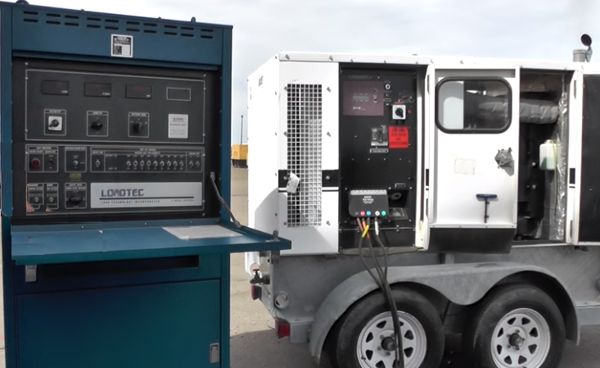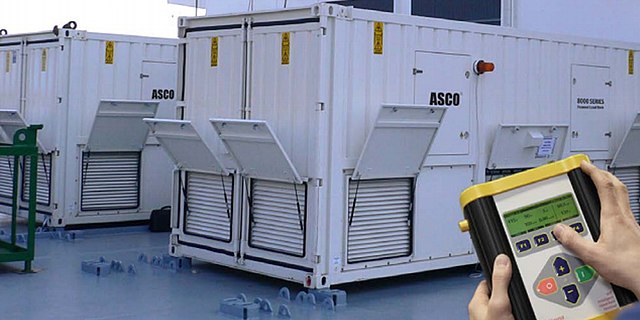Generators are a primary source of electrical backup at your homes and businesses. It often happens that there is no power outage for a long duration, and your generator remains unused for days and even weeks. When a power outage occurs, and your generator fails to respond on a timely basis, you have to face many problems after so much time. Any such situation can be costly and also harm your business and domestic activities. One thing to avoid such catastrophic circumstances is generator load bank testing. Load bank testing is a part of the precautionary general maintenance plan.
This article will discuss in detail generator load bank testing, how it is carried out, and the benefits of load bank testing.
Table of Contents
What is the Generator Load Bank Testing?
To understand what generator load bank testing is, we need to know what a load bank device is and how it works. A load bank device is a machine that develops an electrical load, applies the load to your generator, and then dissipates the power. A load bank is composed of load elements with protections, control, and measuring devices. They are wired into the generator’s output voltage, make sure that the wiring cables are of high quality and can carry the specified amount of voltage.
A generator load bank test includes the assessment of the generator and its working capabilities. The equipment used in the process brings the generator to perform at an appropriate temperature pressure level by adding an artificial load to the system. It can assess the working capacity of the unused generators. If your generator is not used frequently and when it is used, it does not produce voltage more than 30-40 percent of its total output capacity, you must consider a load bank testing procedure.
Steps for Load Bank Testing
A generator load bank test is a timed process, and the device gradually increases the load so that the generator’s performance at different levels of outputs can be measured. Each time the load is increased, the test measures and records the key indicators of the generator’s performance, like its ability to handle an increase in the load and sustain that load for longer periods. Ultimately, the load reaches the generator’s hundred percent capacity, and at this point, the cooling and exhaust system, the generator’s ability to perform at maximum stress. It also eliminates all the carbon build-up and gets rids of wet-stacking.
Following are the steps of the load bank testing
Check The Gauges – Before starting the procedure make sure that you check all the gauges. Your generator has enough fuel to undergo the test. It is recommended that you fill the fuel tank before the test. You should also always check the gauges before starting your generator at the time of power outage.
Start the Generator – Now start your generator and let it run for some time. You should listen to any unusual sounds or abnormalities while running. If everything is fine, you can go ahead with the test.
Connecting the Loads – Now is the time to connect the load bank device. Make sure that the cables are of high quality. Add the weight slowly. You can begin with a large weight of 220 volts and add a small weight of 110 volts. Ensure that the total load capacity on each leg does not increase more than 50 percent of the generator’s total load capacity.
Checking the Meters – While this process is going on, check and record the measurements on your generator’s gauges.
Monitor the Generator – You should carefully monitor your generator while the test is going on. Watch for overheating, check the exhaust system, listen to any unusual sounds and working behavior. If you notice anything wrong, shut down the generator and get it checked. The duration of the test depends upon the type and size of your generator. Small generators are to be tested for 3-4 hours, while the commercial and industrial generators testing may last for days and may go up to a week for very large industrial generators.
Packing it Up – Once all the above steps have been completed, you should start removing the loads slowly and conclude the test. Keep on running the generator for an hour or two on little or no load.
Reasons Behind Generator Load Bank Testing
Power outages are sudden and unexpected in our part of the world. We need our electrical backup source to be on point and properly functioning in such scenarios. Load bank testing is the best way to ensure and avoid any such problems. It is ideal for conducting this test annually. Following are the reasons behind conducting this test.
Generator load bank testing is carried out to ensure that your generator will produce and maintain full load under its capacity without overheating and shutting down.
Commonly, generator exercise is done on very little or no load. While this is a good idea, but it does not ensure that your generator will successfully manage the full load. For this purpose, generator load bank testing is very important.
Generators that are on automatic mode also need to be load tested. The generator’s capacity weakens over the years; hence, it is important to get the load tested.
Diesel generators are prone to wet-stacking. Wet stacking refers to the build-up of unburned fuel and soot build-up in the exhaust systems. Wet-stacking can seriously damage the generator’s capacity to work at optimum level and give full output. Load bank testing works to nullify the negative impacts of wet-stacking by eliminating the deposits and testing whether the generator is working properly or not.
Benefits of Generator Load Bank Testing
If you carry out generator load bank testing, not only your generator’s life will increase by many years. You will also enjoy the following advantages.
Verifies the capabilities of your generator on an actual basis and not by just switching it on
Early diagnosis for any fault can significantly reduce the maintenance expenses and avoid any future serious problems.
Avoid wet-stacking and eliminate carbon deposits.
Check the working of all the major parts and especially the cooling and exhaust systems.
Test the generator for providing maximum output for longer periods
Conclusion
A generator load bank testing is carried out to ensure that your generator is working properly and it will not let you down at the critical time of power outage. We recommend that you add this test to your generator’s annual maintenance plan if it is not used frequently and does not produce more than 30-40 percent of its working capacity. Hire a professional service to get your load bank testing. Their report will give you analysis on kW load, AC voltage, hertz, oil pressure, voltage testing report and any other significant issues found during the test process.


